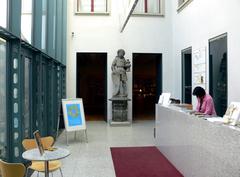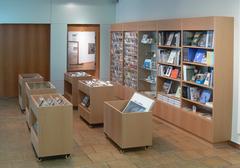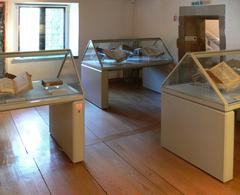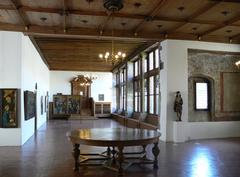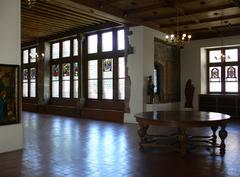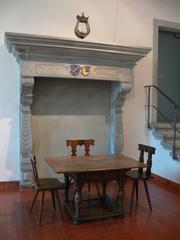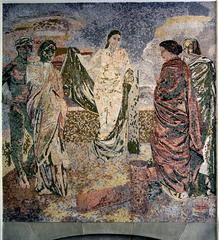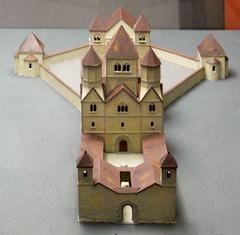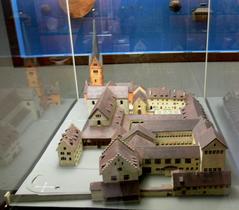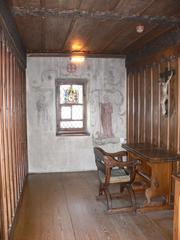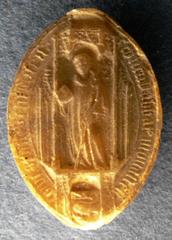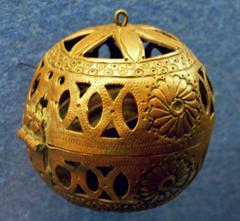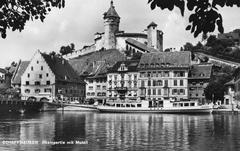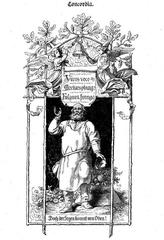
Museum Of All Saints Schaffhausen: Visiting Hours, Tickets, and Historical Sites Guide
Date: 15/06/2025
Introduction
Located in the heart of Schaffhausen, Switzerland, the Museum zu Allerheiligen (Museum of All Saints) is a premier cultural landmark. Housed in the former Benedictine monastery founded in 1049, the museum unites Romanesque and Gothic architecture with a comprehensive collection of art, archaeology, and natural history. This guide details the museum’s founding, architectural evolution, visiting information, and highlights to ensure you make the most of your visit—whether you’re a history enthusiast, art lover, or curious traveler.
Founding and Historical Development
The Museum zu Allerheiligen occupies the historic All Saints Abbey, established by Count Eberhard III of Nellenburg in 1049 (Eichinger; SpottingHistory). Consecrated by Pope Leo IX, the abbey quickly became a religious and economic hub, leveraging its position along the Rhine for trade and influence. The Nellenburg family’s vision included both spiritual life and economic control, with the abbey granted sovereign rights by the papacy and the abbot serving as lord of Schaffhausen (SpottingHistory).
By the late 11th century, the monastery underwent reform under Wilhelm von Hirsau, introducing stricter Benedictine discipline and architectural advancements, with monks arriving from Reichenau Abbey (Eichinger).
Architectural Evolution and Significance
Romanesque and Gothic Foundations
The Münster Allerheiligen, constructed between 1090 and 1105, is a three-nave Romanesque basilica and a prime example of the Hirsau school’s influence (Eichinger; Wikipedia). A bell tower was added around 1150. The monastery also features Switzerland’s largest cloister, blending Romanesque arcades with later Gothic elements (MySwitzerland).
The monastic complex was inspired by Cluny Abbey, with cloisters, gardens, convent buildings, and domestic spaces. Later additions include the Bindhaus (cooperage) above the wine cellar (1460s) and a new convent house (1521/22) (SpottingHistory).
Gothic influences are visible in the Kreuzsaal, the refectory, and communal spaces. The Schiller Bell, cast in 1486, became famous for inspiring Friedrich Schiller’s poem “Das Lied von der Glocke” (Eichinger; Switzerlanding).
Secularization and Museum Transformation
After the Reformation in 1524, the monastery was converted to a provostry, later dissolving in 1529. Its buildings were adapted for administrative use, schooling, and parish life. The cloister garden served as a privileged cemetery until 1874 (SpottingHistory). In 1910, the site became the Museum zu Allerheiligen, now one of Switzerland’s largest museums by area, with extensive displays in archaeology, art, and natural history (TouristPlaces; WhichMuseum).
Artistic and Cultural Highlights
The museum is home to architectural treasures and notable artworks, including Renaissance frescoes from Haus zum Ritter by Tobias Stimmer (1568–1570) (Travelyesplease). Visitors can also view the restored gravestones of the abbey’s founders: Count Eberhard von Nellenburg, Burkhard, and Ita (Eichinger).
The art collection features masterpieces from Lucas Cranach the Elder, Ferdinand Hodler, Félix Vallotton, Otto Dix, and Adolf Dietrich. The Ebnöther Collection presents antiquities from Europe, West Asia, and pre-Columbian cultures, while the natural history section includes zoological, botanical, and geological specimens.
Visiting Museum zu Allerheiligen: Practical Information
Opening Hours
- Tuesday to Sunday: 10:00 AM – 5:00 PM
- Closed Mondays and public holidays
- Always check the official website for the latest hours, especially around holidays.
Ticket Prices
- Adults: CHF 12
- Reduced (students, seniors, groups): CHF 8
- Children under 16: Free
- Family tickets and annual passes are available.
Tickets can be purchased online or at the entrance. The museum participates in the SBB RailAway program for combined transport and entry discounts (MySwitzerland).
Accessibility
The museum is wheelchair accessible with ramps and elevators. Multilingual signage (German and English) and audio guides are available. Staff are ready to assist, and accessible facilities are provided throughout.
Guided Tours and Events
Guided tours in German and English offer deeper insights into the history and collections. The museum hosts temporary exhibitions, lectures, workshops, family days, and interactive workshops—advance booking is recommended for tours and family activities.
Amenities
- Cloakroom and lockers
- Café with garden views (seating in the Pfalzhof in summer)
- Museum shop with books and regional products
- Free Wi-Fi in public areas
Family and Accessibility Services
- Interactive exhibits and family programs
- Baby-changing facilities and stroller access
- Calm environment, with accommodations for sensory needs upon request
Museum Experience and Nearby Attractions
The museum’s serene setting includes Switzerland’s largest cloister, a minster, and a tranquil herb garden (MySwitzerland). After your visit, explore Schaffhausen’s old town, the Munot fortress, and the nearby Rhine Falls—the largest waterfall in Europe (travelonatimebudget.co.uk).
Visual Resources and Virtual Tours
High-quality images, virtual tours, and interactive galleries are available on the museum website and MySwitzerland, with descriptive alt text to enhance accessibility.
Frequently Asked Questions (FAQ)
Q: What are the Museum zu Allerheiligen’s opening hours?
A: Tuesday to Sunday, 10:00 AM to 5:00 PM; closed Mondays.
Q: How do I buy tickets?
A: Purchase online via the museum website or at the entrance. Discounts are available for certain groups.
Q: Is the museum accessible for visitors with disabilities?
A: Most areas are wheelchair accessible, with staff assistance available on request.
Q: Are guided tours available in English?
A: Yes, guided tours can be arranged in English and other languages.
Q: Can I combine my visit with other attractions?
A: Yes—Rhine Falls, Munot fortress, and Schaffhausen’s old town are all nearby.
Q: Is photography allowed inside the museum?
A: Photography is generally permitted except during certain special exhibitions. Always check signage.
Contact Information
- Address: Museum zu Allerheiligen, Klosterstrasse 16, 8200 Schaffhausen, Switzerland
- Phone: +41 (0)52 633 07 77
- Email: [email protected]
- Website: allerheiligen.ch
Conclusion and Recommendations
The Museum zu Allerheiligen is a gateway to Swiss history, art, and architecture, offering a dynamic and accessible experience for all visitors. Its centuries-old cloister, rich collections, and engaging programs make it a standout destination. Plan your visit by checking the official website for current exhibitions, events, and ticketing details. Enhance your trip with the Audiala app for interactive self-guided tours and further insights into Schaffhausen’s historical treasures.
Embrace Swiss heritage at the Museum zu Allerheiligen—where centuries of culture come alive in a breathtaking setting.
Sources and Further Reading
- This article draws on a range of authoritative sources, including:

